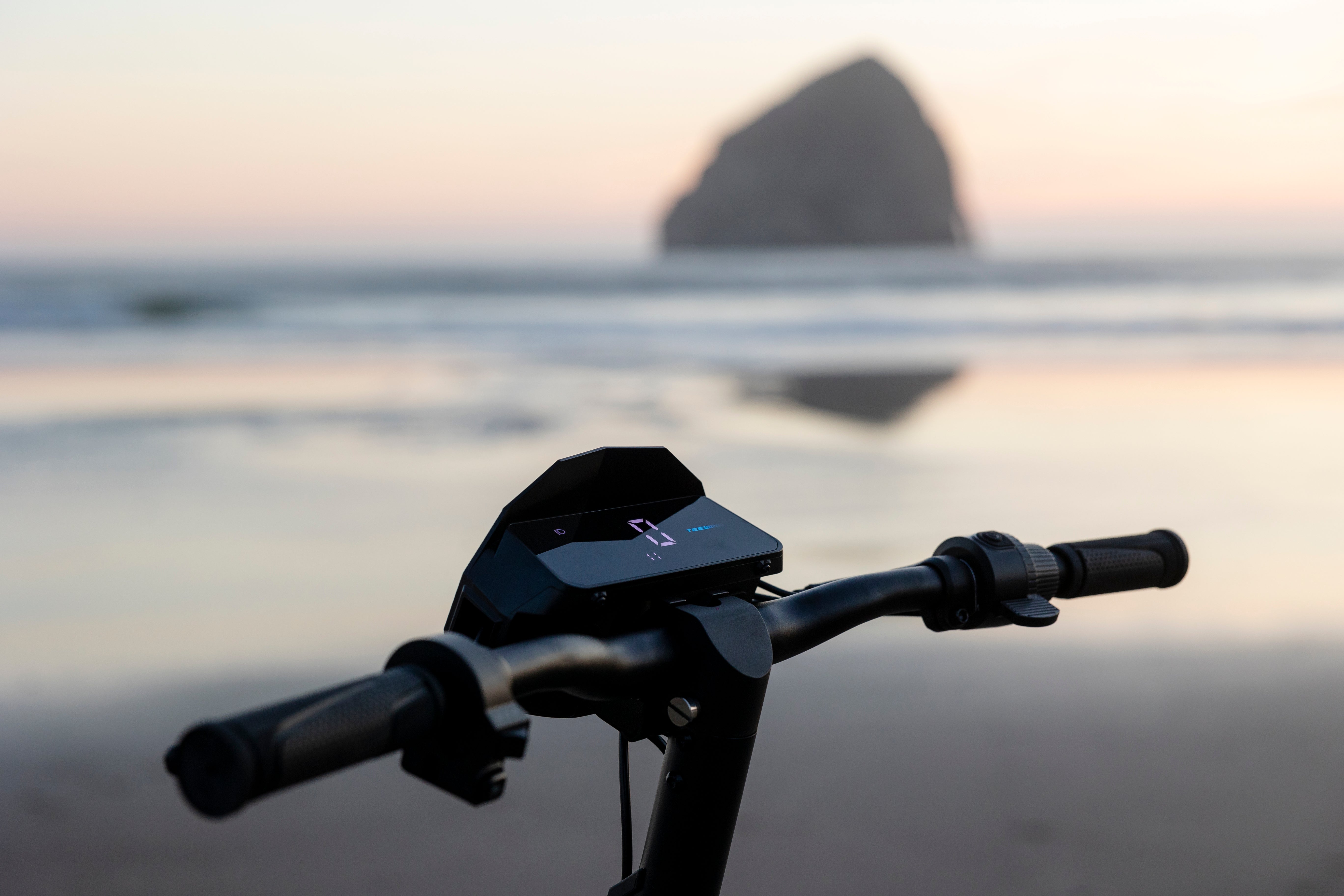
E-Scooters
Electric Scooter Displays: Why You Need One
An electric scooter display is more than just a screen—it’s your control center on the go. Whether it’s an LCD display or an LED display, having a well-designed interface helps riders monitor speed, battery life, and ride settings with ease. Let’s explore the importance of electric scooter displays, the types available, and what to consider when choosing one.
Why an Electric Scooter Display Matters
A display screen on an electric scooter enhances both convenience and safety. Here’s why:
Speed Monitoring – Check your current speed to ensure safe riding.
Battery Status – Keep track of your charge level to avoid running out of power mid-ride.
Mileage Tracking – Some displays show trip distance and total mileage.
Ride Mode Selection – Adjust speed settings or switch between eco and sport modes.
Lighting & Indicators – Control headlights, turn signals, and other features.
Types of Electric Scooter Displays
1. LCD Displays
An electric scooter LCD display provides a crisp and clear readout, usually featuring:
Digital speedometer
Battery percentage indicator
Ride mode selection
Backlit screen for night visibility
2. LED Displays
An electric scooter LED display is often simpler but still effective. Common features include:
Bright and easy-to-read interface
Battery level indicators
Minimalist design for a sleek look
3. Smart Displays with App Connectivity
Some high-end scooters feature smart displays that sync with a mobile app, allowing riders to:
Track ride data via Bluetooth
Customize ride settings
Receive maintenance alerts
Choosing an Electric Scooter with a Display Screen
When selecting an electric scooter with a display screen, consider factors like brightness, readability in sunlight, and touchscreen capabilities. A high-quality electric scooter with an LCD display or an advanced LED screen ensures a smoother and safer riding experience.
Final Thoughts
An electric scooter display is essential for staying informed and in control while riding. Whether you prefer an LCD display for detailed stats or an LED display for simplicity, having a screen enhances safety and convenience. Choose an electric scooter with a display screen that meets your riding needs and enjoy a smarter, more connected ride!
Apr 17, 2025
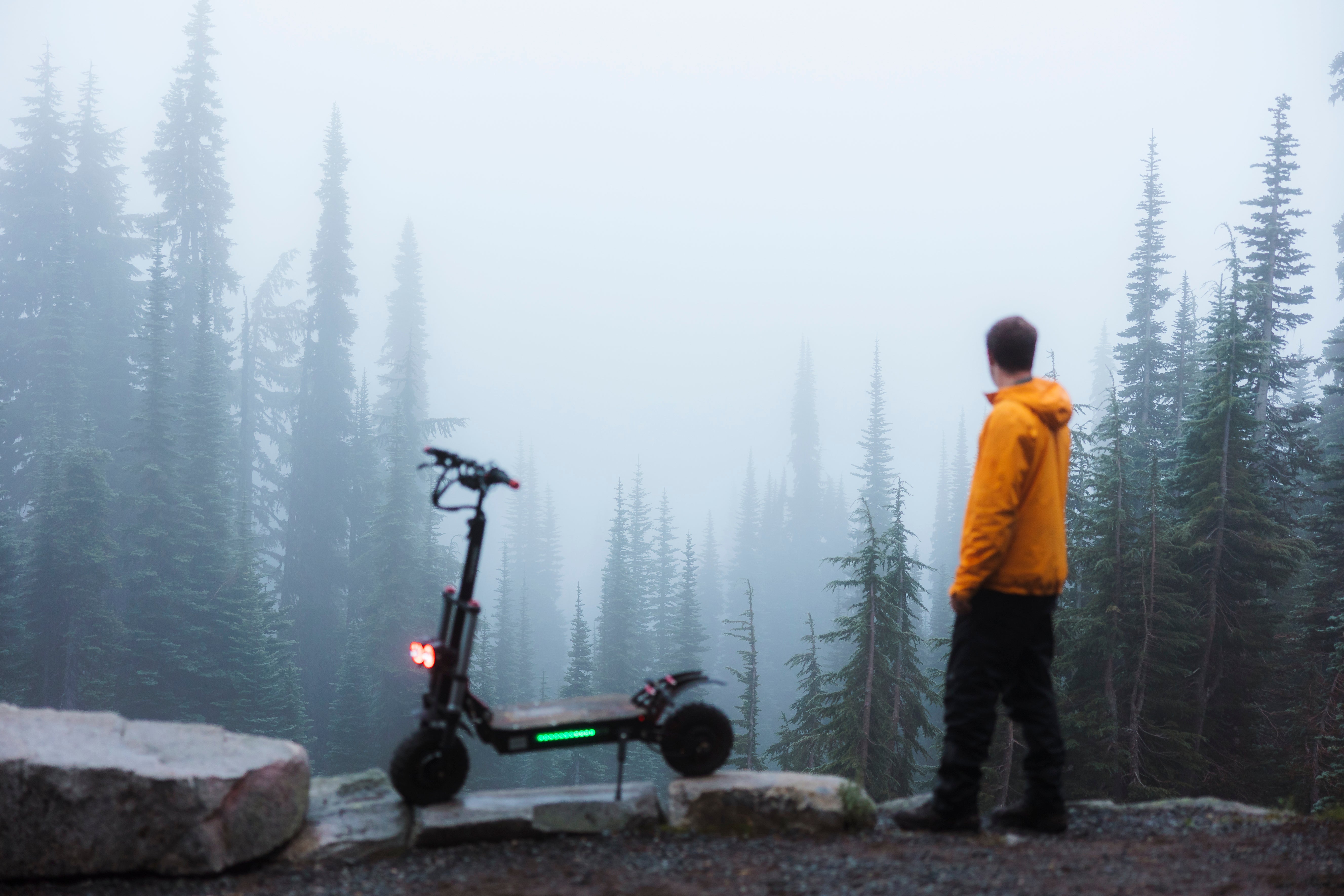
E-Scooters
How Far Can an Electric Scooter Go? Best Electric Scooters for Travel
Electric scooters have revolutionized urban commuting and travel, offering an eco-friendly and efficient mode of transportation. A common question among enthusiasts and commuters alike is: How far can an electric scooter go on a single charge? This guide delves into the factors influencing electric scooter range and highlights top models suitable for long-distance travel.
Understanding Electric Scooter Range
The distance an electric scooter can cover on a single charge varies based on several factors:
Battery Capacity: Measured in watt-hours (Wh), a higher capacity typically translates to a longer range.
Motor Power: More powerful motors may consume more energy, affecting range.
Rider Weight: Heavier riders can reduce the scooter's range due to increased energy demand.
Terrain and Inclines: Hilly or uneven terrains require more power, decreasing range.
Speed and Riding Mode: Higher speeds and aggressive riding modes consume more battery.
Weather Conditions: Cold temperatures can diminish battery performance.
For a personalized estimate of your scooter's range, consider using tools like the Electric Scooter Range Calculator.
Average Ranges by Scooter Type
Scooter Type
Approximate Range per Charge
Entry-Level Commuter
15–25 miles (24–40 km)
Mid-Range Performance
25–40 miles (40–64 km)
High-End Long-Range
40–80+ miles (64–129+ km)
These ranges are general estimates; actual performance may vary based on the factors mentioned above.
Top Electric Scooters for Long-Distance Travel
For those seeking scooters capable of covering extensive distances, here are some top recommendations:
Teewing Long-Range Electric Scooters: A collection of scooters designed for extended travel, combining power and efficiency.
Teewing MARS XTR 10000W Dual Motor Electric Scooter: Equipped with a robust 10000W dual motor, this model offers impressive range and speed, suitable for long journeys.
Apollo Long-Range Models: Known for their durability and performance, Apollo scooters are ideal for riders seeking extended range capabilities.
Tips for Maximizing Your Scooter's Range
To get the most out of your electric scooter's battery:
Maintain Optimal Tire Pressure: Properly inflated tires reduce rolling resistance.
Ride at Moderate Speeds: Consistent, moderate speeds consume less energy.
Use Eco or Power-Saving Modes: These settings limit power output, conserving battery life.
Avoid Frequent Stops and Starts: Smooth acceleration and deceleration are more energy-efficient.
Charge Regularly: Keeping the battery charged prevents deep discharges, which can degrade battery health.
Planning for Extended Trips
For those considering longer journeys or even camping trips with their electric scooters, proper planning is essential. Ensure you have access to charging stations or portable chargers, and consider the terrain and weather conditions of your route. For more detailed guidance, refer to our blog on Planning Your Electric Scooter Road Trips and Camping.
Electric scooters offer a versatile and sustainable mode of transportation, capable of covering impressive distances on a single charge. By understanding the factors that influence range and selecting the right model for your needs, you can confidently embark on longer journeys. Explore our collection of long-range electric scooters to find the perfect companion for your travels.
Apr 17, 2025

E-Scooters
How Fast Can Electric Scooters Go? Speed & Riding Modes Guide
Electric scooters have become a popular choice for urban commuting and recreational riding. A common question among enthusiasts is: How fast can electric scooters go? This guide delves into the top speeds of various models and explains how different riding modes can influence your scooter's performance.
Electric Scooter Top Speeds
Electric scooters come in a range of speeds to cater to different needs:
Commuter Scooters: Typically, these scooters have top speeds between 15–30 mph (24–48 km/h), making them ideal for daily urban travel.
High-Performance Models: For thrill-seekers, certain models push the boundaries:
The Inmotion RS boasts a top speed of 68 mph (110 km/h).
The Slack Core 920R reaches up to 90 mph (145 km/h), positioning it among the fastest e-scooters available.
It's essential to note that local regulations may impose speed limits on electric scooters. For instance, in some cities, exceeding certain speeds may require registration or licensing.
Understanding Electric Scooter Riding Modes
Most electric scooters offer multiple riding modes to accommodate various preferences and conditions:
Eco Mode: Prioritizes energy efficiency, extending battery life by limiting speed and acceleration.
Standard/Drive Mode: Balances speed and battery consumption, suitable for regular commuting.
Sport Mode: Maximizes performance, offering higher speeds and quicker acceleration, albeit with increased battery usage.
Some advanced scooters also feature modes like SmartEco™, which dynamically adjust performance for optimal efficiency.
Tips to Enhance Your E-Scooter's Speed
If you're looking to get the most out of your electric scooter's speed capabilities:
Regular Maintenance: Ensure tires are properly inflated and the scooter is well-maintained to reduce drag.
Battery Health: A fully charged and healthy battery can deliver optimal performance.Electrek+2Ather Energy+2Electric Scooter Guide+2
Weight Management: Reducing the load can help achieve higher speeds.
Software Updates: Some scooters receive firmware updates that can enhance performance.
Always prioritize safety and adhere to local laws when attempting to increase your scooter's speed.
Final Thoughts
Understanding the speed capabilities and riding modes of electric scooters can help you choose the right model for your needs. Whether you're commuting in the city or seeking high-speed thrills, there's an electric scooter out there for you.
For those interested in high-performance models, explore our collection of fastest electric scooters. Notably, the Mars XTR 10000W Dual Motor Electric Scooter offers exceptional speed and power for the ultimate riding experience.
Apr 17, 2025
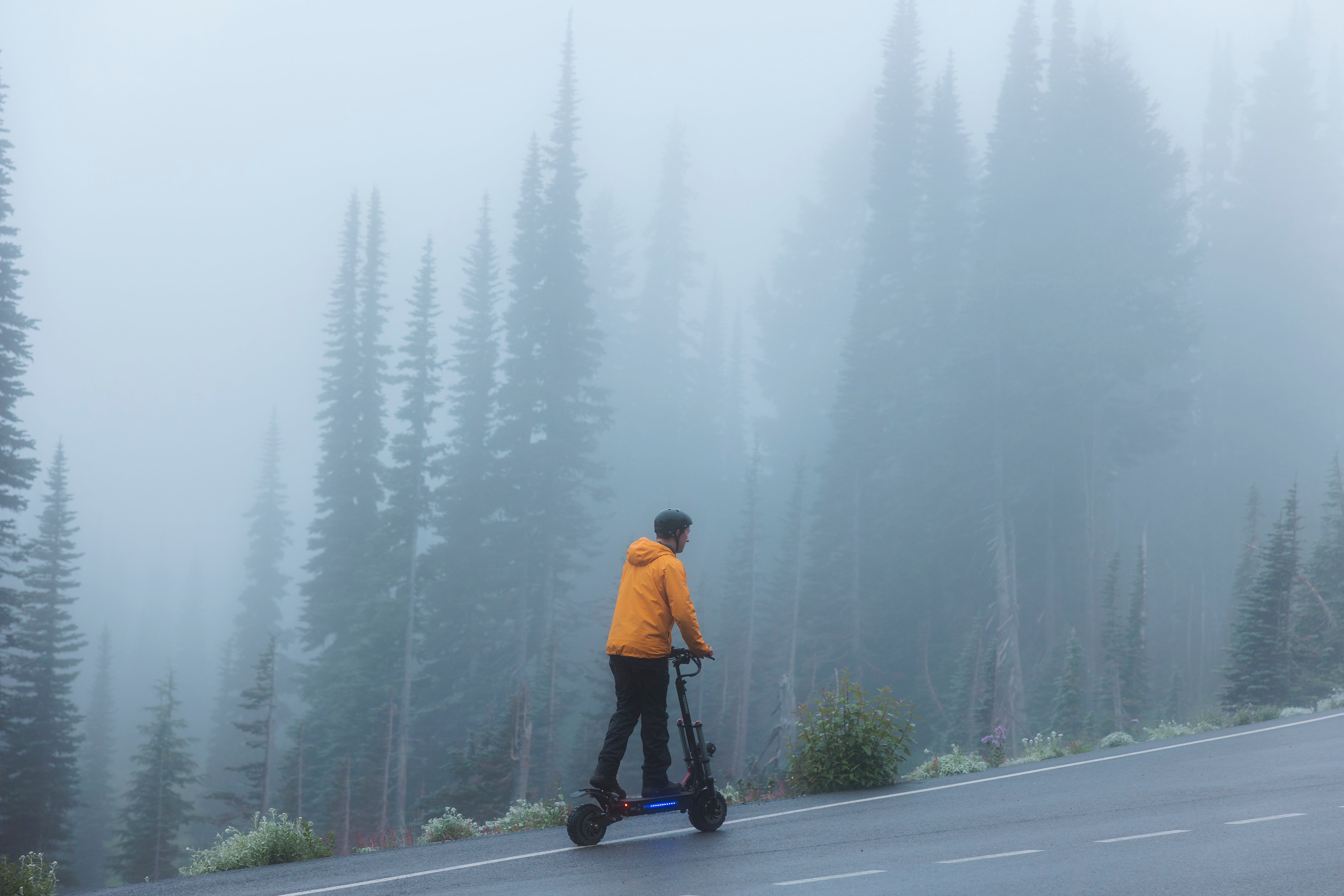
E-Scooters
Electric Scooter History: Who Invented It & When It Was First Made
Electric scooters have become a staple in modern urban transportation, but their history dates back over a century. This article delves into the origins of electric scooters, highlighting key inventors and milestones that have shaped their evolution.
The Birth of the Motorized Scooter: The Autoped
In 1913, inventor Arthur Hugo Cecil Gibson filed a patent for a "Self-Propelled Vehicle," which would later be known as the Autoped. Manufactured between 1915 and 1919 in the United States, and subsequently in Germany by Krupp from 1919 to 1922, the Autoped featured a collapsible steering rod for easy storage and transportation. Notably, some versions of the Autoped were equipped with electric motors, making them among the earliest electric scooters.
Early Electric Scooter Innovations
While the Autoped was a significant milestone, other inventors also contributed to the development of electric scooters. For instance, physicist Elmer R. Johnson is credited with inventing an electric scooter in the early 1900s, with his design emerging around 1915. These early innovations laid the groundwork for the diverse range of electric scooters available today.
The Modern Kick Scooter Revival
In the 1990s, Swiss banker Wim Ouboter reinvented the kick scooter to address his need for a convenient mode of transportation over short distances. His design led to the creation of the modern portable lightweight kick scooter, which gained popularity worldwide and influenced the development of contemporary electric scooters.
The Segway and Advancements in Personal Transport
In 2001, inventor Dean Kamen introduced the Segway, a two-wheeled, self-balancing personal transporter. Utilizing gyroscopic sensors and electric motors, the Segway represented a significant advancement in personal electric transportation, despite facing market challenges.
Conclusion
From the early 20th-century Autoped to modern electric scooters, the evolution of electric scooters reflects ongoing innovation in personal transportation. Understanding this history provides insight into the technological advancements that have made electric scooters a prevalent mode of urban mobility today.
Apr 17, 2025

Buying Guide
Electric Scooter Weight and Load Limits: What You Need to Know
When selecting an electric scooter, understanding both its weight and load capacity is crucial. These factors influence portability, performance, and safety. Whether you're seeking a lightweight model for easy transport or a heavy-duty scooter to support a higher weight, this guide will help you make an informed choice.
Understanding Scooter Weight
Electric scooters vary in weight based on their design, materials, and features:
Lightweight Models: Approximately 13–15 kg (29–33 lbs), ideal for portability and easy storage.
Mid-Range Scooters: Around 20–25 kg (44–55 lbs), offering a balance between performance and portability.
Heavy-Duty Scooters: Up to 31 kg (70 lbs) or more, built for durability and higher performance.
For those prioritizing portability, explore our Lightweight and Portable Electric Scooters collection.
Load Capacity: How Much Weight Can a Scooter Hold?
The load capacity of an electric scooter determines the maximum weight it can safely support:
Standard Capacity: Most scooters support up to 100 kg (220 lbs), suitable for average riders.
High Capacity: Some models are designed to support riders up to 120 kg (265 lbs) or more, catering to heavier individuals .
Exceeding the recommended weight limit can affect the scooter's performance and safety.
For scooters designed to accommodate heavier riders, check out our Scooters for Heavy Riders collection.
Factors Influencing Weight and Load Limits
Several elements affect a scooter's weight and its load-bearing capacity:
Frame Material: Aluminum frames are lightweight, while steel frames offer higher strength.
Motor and Battery Size: Larger motors and batteries increase weight but enhance performance.
Suspension and Tires: Advanced suspension systems and larger tires add weight but improve ride comfort.
Design Features: Foldable designs and additional features can influence both weight and load capacity.
Choosing the Right Scooter for Your Needs
Consider your specific requirements when selecting a scooter:
For Portability: If you need to carry your scooter frequently, opt for lightweight models.
For Higher Load Capacity: Choose scooters designed to support heavier weights, ensuring safety and performance.
For Balanced Performance: Mid-range scooters offer a compromise between weight and load capacity, suitable for most riders.
Explore our curated collections to find the perfect scooter:
Lightweight and Portable Electric Scooters
Scooters for Heavy Riders
Understanding the weight and load limits of electric scooters is essential for safety and optimal performance. By considering these factors and choosing a scooter that aligns with your needs, you can enjoy a reliable and enjoyable riding experience.
Apr 17, 2025
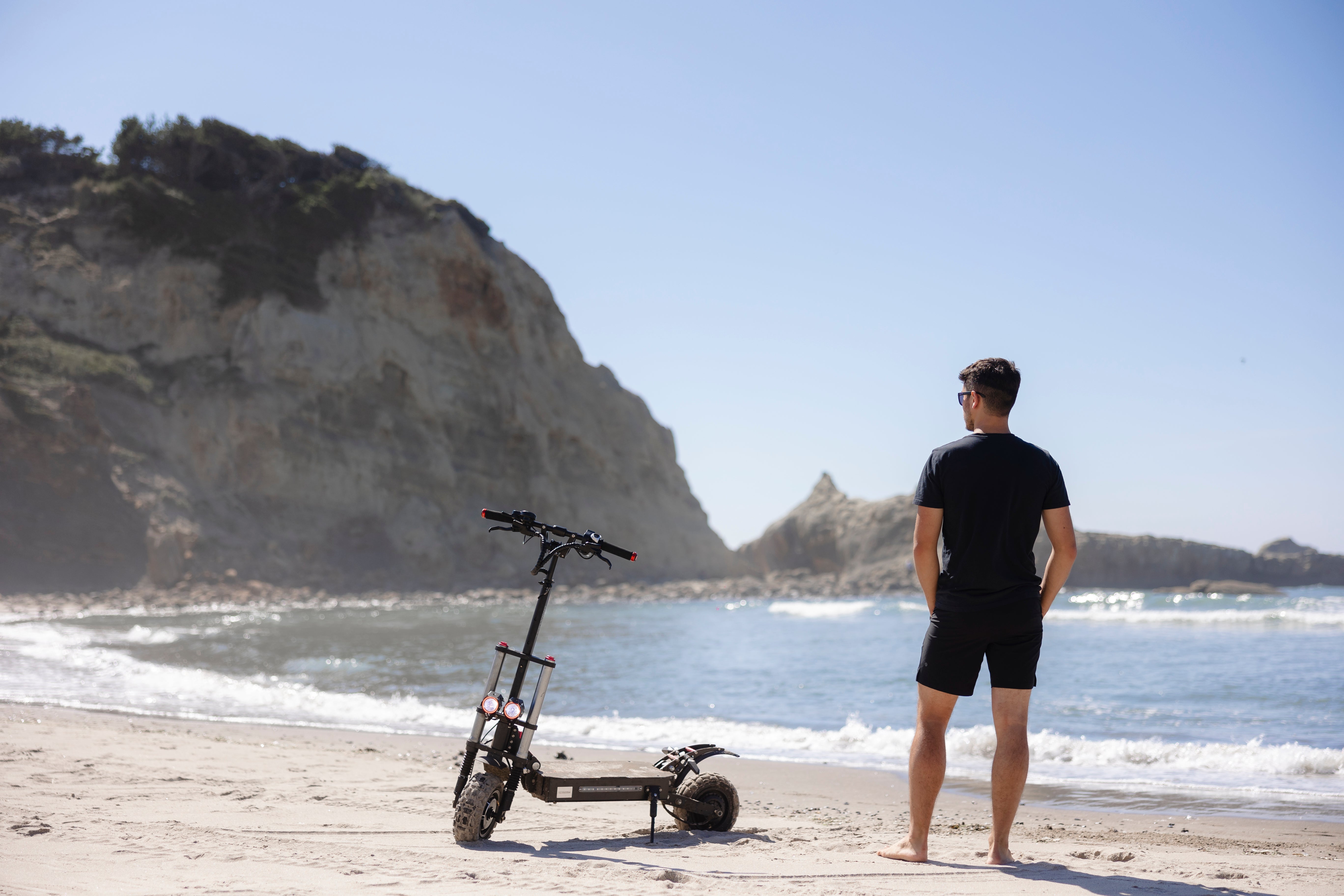
E-Scooters
Electric Scooter Health Benefits: Burn Calories, Boost Wellness & Stay Active
Electric scooters aren't just a fun and eco-friendly way to get around—they also offer a range of health benefits. Whether you're commuting, running errands, or exploring your neighborhood, riding an e-scooter can contribute to your physical and mental well-being.
1. Burn Calories While You Ride
You might be surprised to learn that riding an electric scooter can help you burn calories. A person weighing around 150 pounds can burn approximately 100–140 calories per hour while riding an e-scooter . While this isn't as intense as some workouts, it's a significant improvement over sedentary activities like driving.
2. Improve Balance and Core Strength
Maintaining balance on an e-scooter engages your core muscles and enhances coordination. Regular riding can strengthen your abdominal and lower back muscles, contributing to better posture and stability.
3. Enhance Mental Well-Being
Riding an electric scooter can have positive effects on your mental health. The act of riding outdoors, experiencing fresh air, and engaging with your surroundings can reduce stress and improve mood . Incorporating e-scooter rides into your routine can be a simple way to boost your overall happiness.
4. Promote Active Transportation
Choosing an electric scooter over a car for short trips encourages a more active lifestyle. Even though e-scooters are motorized, they still require physical engagement, especially when starting, stopping, and navigating turns. This low-impact activity can be particularly beneficial for those looking to increase their daily movement without high-intensity workouts.
5. Support Weight Management Goals
While e-scooter riding alone isn't a weight loss solution, it can complement other physical activities. By incorporating scooter rides into your daily routine, you can increase your overall physical activity, which supports weight management and cardiovascular health .
Incorporating electric scooter rides into your daily life offers more than just convenience—it contributes to your physical and mental health. From burning calories to enhancing mood, e-scooters provide a fun and accessible way to stay active.
Apr 17, 2025
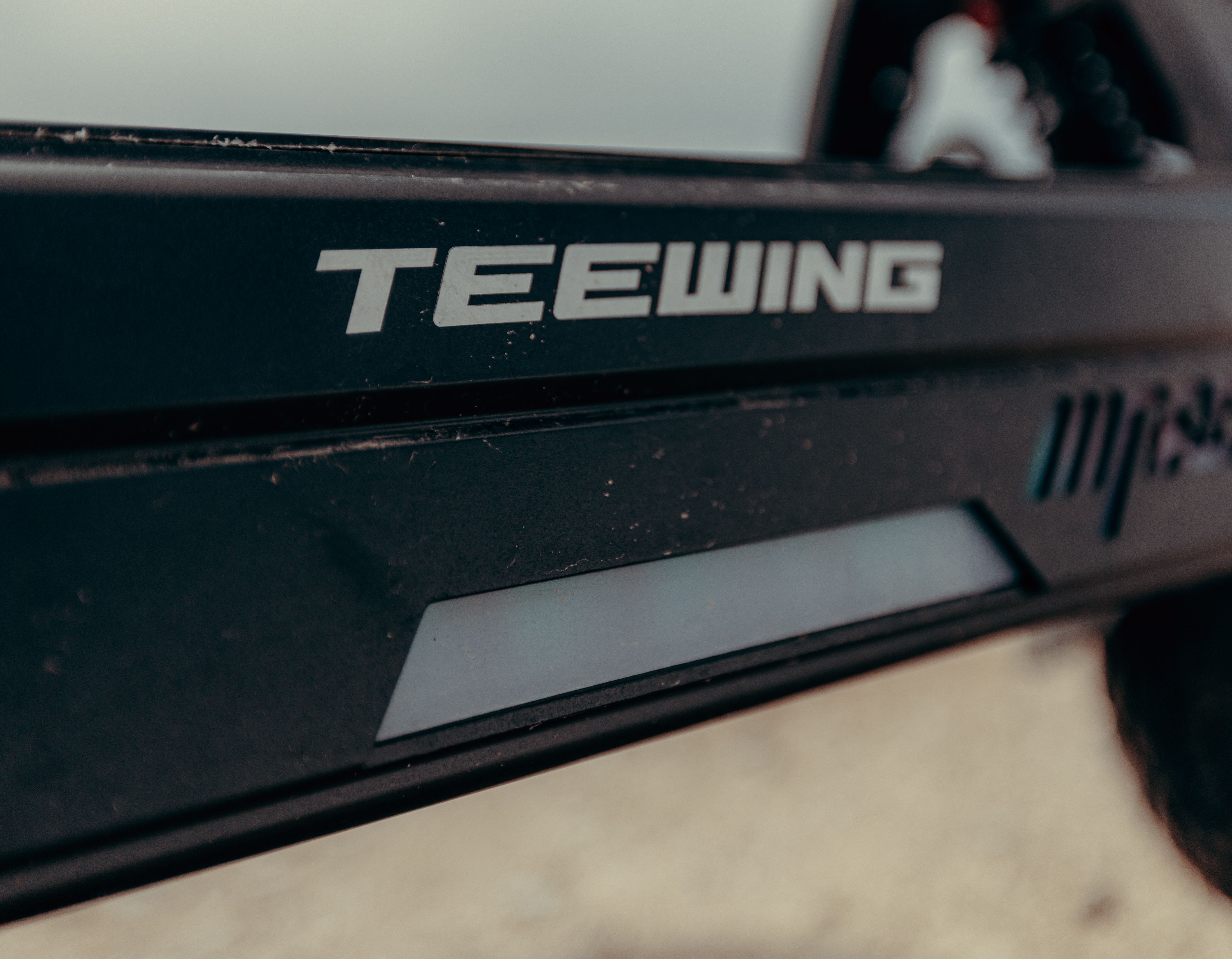
E-Scooters
What Makes a Good Electric Scooter? Key Specs & Features
Electric scooters have become a popular mode of transportation for urban commuters and recreational riders alike. But with so many models on the market, what exactly makes a good electric scooter? Understanding the key specifications and features can help you choose the right scooter for your needs.
1. Motor Power: The Driving Force
The motor is the heart of an electric scooter, determining its speed and ability to tackle inclines. Most adult scooters feature motors ranging from 250W to 1000W. A 350W motor is suitable for flat terrains and lighter riders, while a 500W or higher motor offers better performance on hills and for heavier users.
2. Battery Capacity: Range Matters
Battery capacity, measured in watt-hours (Wh), directly affects how far you can travel on a single charge. Standard scooters come with batteries around 250Wh, providing approximately 10 miles of range. High-performance models boast batteries exceeding 1000Wh, allowing for ranges up to 60 miles.
3. Speed and Riding Modes
Top speed varies among scooters, typically ranging from 15 to 30 mph. Many models offer multiple riding modes—such as Eco, Normal, and Sport—to balance speed and battery efficiency. These modes allow riders to customize their experience based on their preferences and riding conditions.
4. Build Quality and Weight
A scooter's construction impacts its durability and portability. Lightweight models (under 30 lbs) are easier to carry and store but may sacrifice some stability. Heavier scooters often provide a sturdier ride and higher weight capacity, accommodating riders up to 265 lbs or more.
5. Braking Systems
Effective braking is crucial for safety. Common braking systems include:
Disc Brakes: Offer strong stopping power and are reliable in various conditions.
Regenerative Brakes: Convert kinetic energy back into battery power, extending range.
Drum Brakes: Require less maintenance and perform well in wet conditions.
Some scooters combine multiple braking systems for enhanced safety.
6. Tires and Suspension
Tire type and suspension affect ride comfort and handling:
Pneumatic (Air-Filled) Tires: Provide better shock absorption but may be prone to flats.
Solid Tires: Are maintenance-free but offer a rougher ride.
Suspension Systems: Front and/or rear suspension smooth out rides over uneven terrain, enhancing comfort.
7. Additional Features
Modern electric scooters come equipped with various features to enhance usability:
LED Displays: Show speed, battery level, and riding mode.
Lighting: Front and rear lights improve visibility and safety during night rides.
Smart Connectivity: Bluetooth and app integration allow for firmware updates and ride tracking.
Water Resistance: Ratings like IP54 or IP66 indicate the scooter's ability to withstand water exposure.
Choosing a good electric scooter involves evaluating various specifications and features to match your riding needs. By understanding motor power, battery capacity, speed options, build quality, braking systems, tire types, and additional features, you can make an informed decision and enjoy a reliable, efficient, and enjoyable ride.
Apr 17, 2025
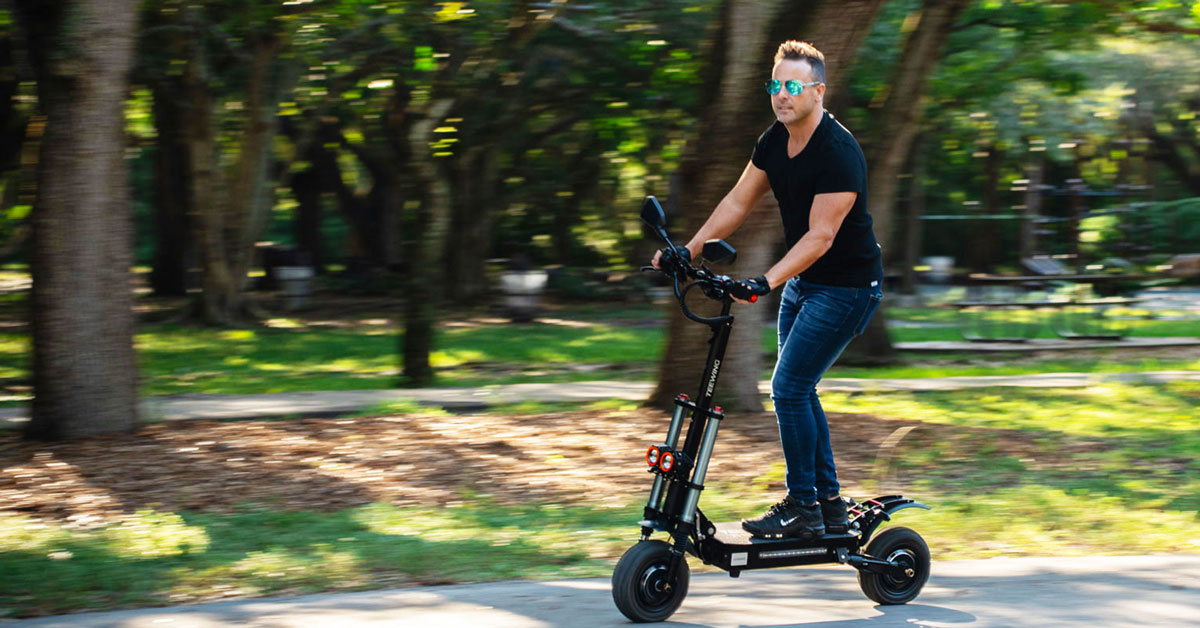
E-Scooters
Electric Scooter vs. Electric Bike: Which Is Better for Commuting?
As urban commuting evolves, electric scooters and electric bikes have emerged as popular alternatives to traditional transportation. Both offer eco-friendly, efficient, and cost-effective ways to navigate city streets. But when it comes to choosing between an electric scooter and an electric bike for your daily commute, which one is better? Let's delve into the key differences to help you make an informed decision.
Portability and Storage
Electric scooters are generally more compact and lightweight than electric bikes. Their foldable designs make them easy to carry onto public transportation or store under desks. This portability is ideal for commuters with limited storage space or those who combine multiple modes of transport.
In contrast, electric bikes are bulkier and heavier, often requiring dedicated storage space. While some models offer folding features, they still occupy more room than scooters.
Speed and Range
Electric bikes typically offer higher speeds and longer ranges compared to scooters. Most e-bikes can reach speeds of 20–28 mph and cover distances between 20–70 miles on a single charge. This makes them suitable for longer commutes or those involving hilly terrains.
Electric scooters usually have top speeds ranging from 15–25 mph and a range of 15–40 miles, depending on the model. While sufficient for short to medium commutes, they may require more frequent charging for longer distances.
Comfort and Ride Experience
E-bikes offer a more comfortable ride, especially over longer distances or uneven terrains. Their larger wheels and suspension systems absorb shocks better, and the option to pedal provides flexibility.
Scooters, with smaller wheels and standing platforms, may result in a bumpier ride on rough surfaces. However, they are agile and easy to maneuver through traffic, making them ideal for short urban trips.
Cost and Maintenance
Generally, electric scooters are more affordable than electric bikes. They have fewer components, leading to lower maintenance costs. E-bikes, while more expensive, offer durability and can replace traditional bicycles for various uses.
Maintenance for e-bikes may include chain lubrication, brake adjustments, and tire replacements. Scooters require less upkeep but may need occasional brake and tire checks.
Legal Regulations
Regulations for electric scooters and bikes vary by location. Some cities have specific rules regarding speed limits, helmet usage, and where these vehicles can be ridden. It's essential to familiarize yourself with local laws to ensure compliance.
Which Should You Choose?
Choose an electric scooter if:
You need a lightweight, portable option for short commutes.
Storage space is limited.
You prefer a lower-cost, low-maintenance vehicle.
Choose an electric bike if:
Your commute covers longer distances or hilly terrains.
Comfort during the ride is a priority.
You're willing to invest more for added features and durability.
Explore Teewing's Collection
Whether you lean towards scooters or bikes, Teewing offers a range of high-quality Electric Scooters Collection to suit your commuting needs:
Make your daily commute efficient and enjoyable with the right electric vehicle.
Apr 17, 2025

Buying Guide
Best Hill Climbing Electric Scooters: Conquer Steep Slopes with Ease
Navigating hilly terrains can be challenging, but with the right electric scooter, steep slopes become manageable. Whether you're commuting through mountainous areas or exploring elevated landscapes, selecting a scooter built for hill climbing is essential.
Can Electric Scooters Climb Hills?
Yes, many electric scooters are capable of ascending hills, but their effectiveness depends on specific features:
Motor Power: Scooters with motors of 1000W or more are better suited for steep inclines.
Torque: Higher torque ensures the scooter can maintain speed while climbing.
Battery Capacity: A robust battery supports sustained power output during uphill rides.
Weight Capacity: Ensure the scooter can handle your weight, as heavier loads require more power to climb.
Top Electric Scooters for Hill Climbing
Here are some top-rated electric scooters known for their hill-climbing capabilities:
Teewing GT4 Equipped with a powerful motor, the Teewing GT4 offers impressive performance on inclines.
Varla Eagle One V2 This scooter boasts a peak power output and dual motors, making it adept at handling steep hills.
INMOTION Climber Designed specifically for challenging terrains, the INMOTION Climber excels in power and battery life.
Dualtron Victor With a 4,000-watt dual-motor setup, the Dualtron Victor is built for steep inclines and offers excellent suspension for a smooth ride.
Tips for Riding Uphill
Maintain Momentum: Approach hills with adequate speed to reduce strain on the motor.
Lean Forward: Shifting your weight forward can help maintain balance and traction.
Monitor Battery Levels: Ensure your battery is sufficiently charged before tackling long or steep climbs.
Regular Maintenance: Keep your scooter in top condition by regularly checking tire pressure and brake functionality.
Selecting the right electric scooter for hill climbing ensures a safer and more enjoyable ride. Consider the models mentioned above to find one that fits your needs and budget.
Apr 17, 2025
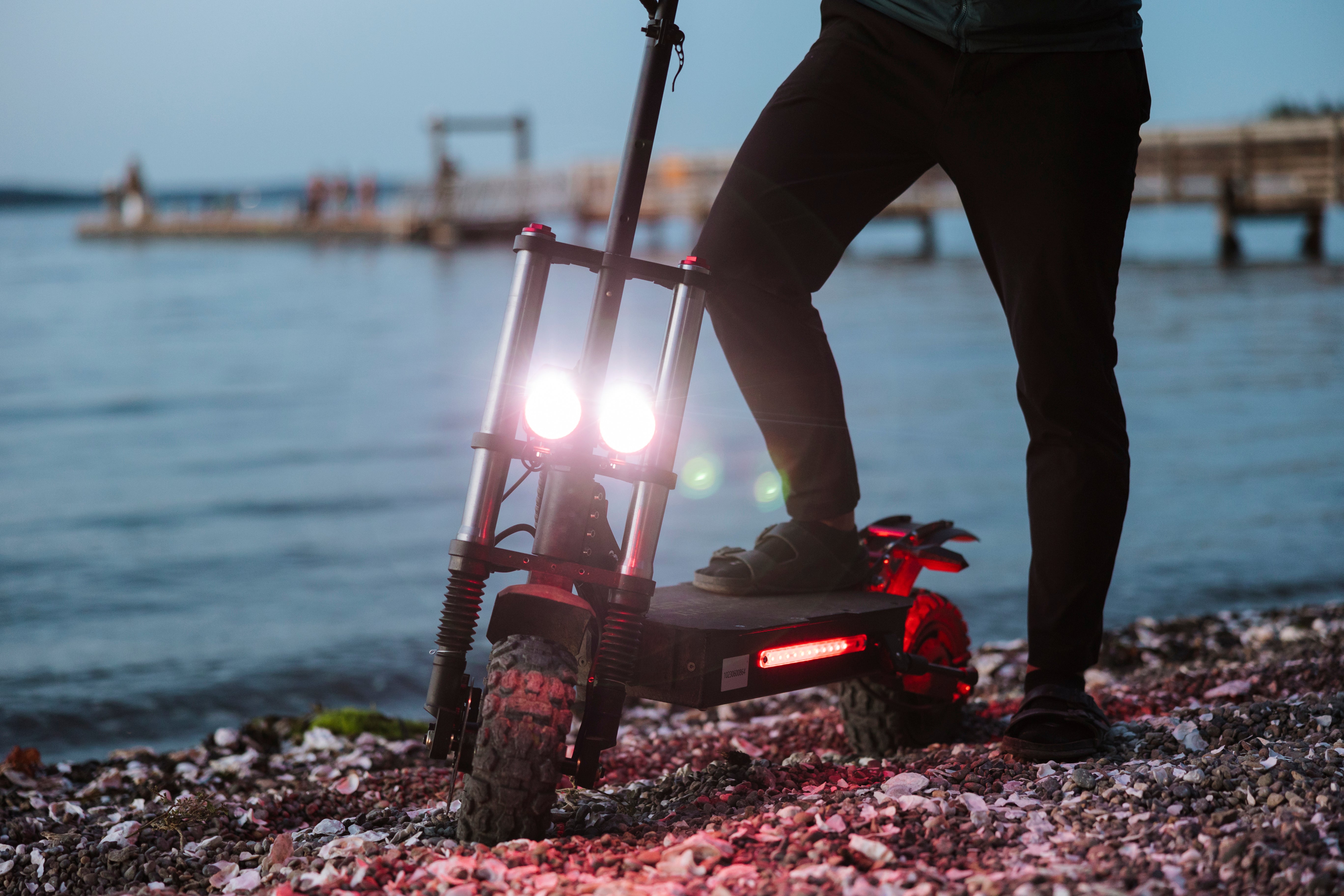
E-Scooters
Best 72V Electric Scooters: Unleashing High-Speed Performance
For thrill-seekers and performance enthusiasts, 72V electric scooters represent the pinnacle of speed and power in personal electric transportation. These high-voltage machines are designed to deliver exhilarating acceleration and top-tier performance, making them ideal for both urban commuting and off-road adventures.
Understanding 72V Electric Scooters
A 72V electric scooter is equipped with a 72-volt battery system, providing higher power output compared to standard models. This increased voltage allows for:
Enhanced Top Speeds: Many 72V scooters can reach speeds exceeding 60 mph.
Improved Acceleration: Higher voltage contributes to quicker acceleration, essential for navigating traffic or tackling inclines.
Greater Range: Larger battery capacity often translates to extended travel distances on a single charge.
Top 72V Electric Scooters
Here are some of the leading 72V electric scooters known for their exceptional performance:
FLJ K13 72V 12000W Boasting a 72V 50Ah battery and dual 6000W motors, the FLJ K13 achieves speeds up to 75 mph, making it one of the fastest in its class.
NANROBOT LS7+ Equipped with a 72V 35Ah Samsung battery and dual motors, the LS7+ reaches top speeds of 74.5 mph, offering a blend of speed and durability.
Solar FF 2.0 This model features dual 2500W or 4000W motors, delivering up to 8000W of power and speeds between 55-65 mph, along with a range of 50-60 miles.
RoadHitter 72V 8000W With dual 4000W motors and a 72V 43Ah battery, the RoadHitter achieves speeds up to 67 mph and offers a range of 75 miles, suitable for various terrains.
VSETT 11+ Super 72V This scooter delivers speeds over 65 mph and a range up to 60 miles, combining performance with advanced features for a superior ride.
Key Considerations When Choosing a 72V Scooter
When selecting a 72V electric scooter, consider the following factors:
Motor Power: Higher wattage motors provide better acceleration and hill-climbing capabilities.
Battery Capacity: Larger batteries offer extended range but may increase the scooter's weight.
Suspension System: Quality suspension ensures a smoother ride, especially at high speeds or on rough terrains.
Braking Mechanism: Reliable braking systems are crucial for safety at higher speeds.
Build Quality: Durable materials and construction enhance longevity and rider confidence.
Performance Insights
The performance of 72V electric scooters is influenced by various factors:
Top Speed: Depending on the model, top speeds range from 55 to 75 mph.
Range: Most 72V scooters offer ranges between 50 to 90 miles on a single charge, varying with usage and terrain.
Charging Time: Charging durations differ based on battery capacity and charger specifications, typically ranging from 5 to 10 hours.
Investing in a 72V electric scooter offers unparalleled speed and performance for enthusiasts seeking the ultimate riding experience. By considering the factors outlined above, you can select a model that aligns with your performance needs and riding preferences.
Apr 17, 2025


